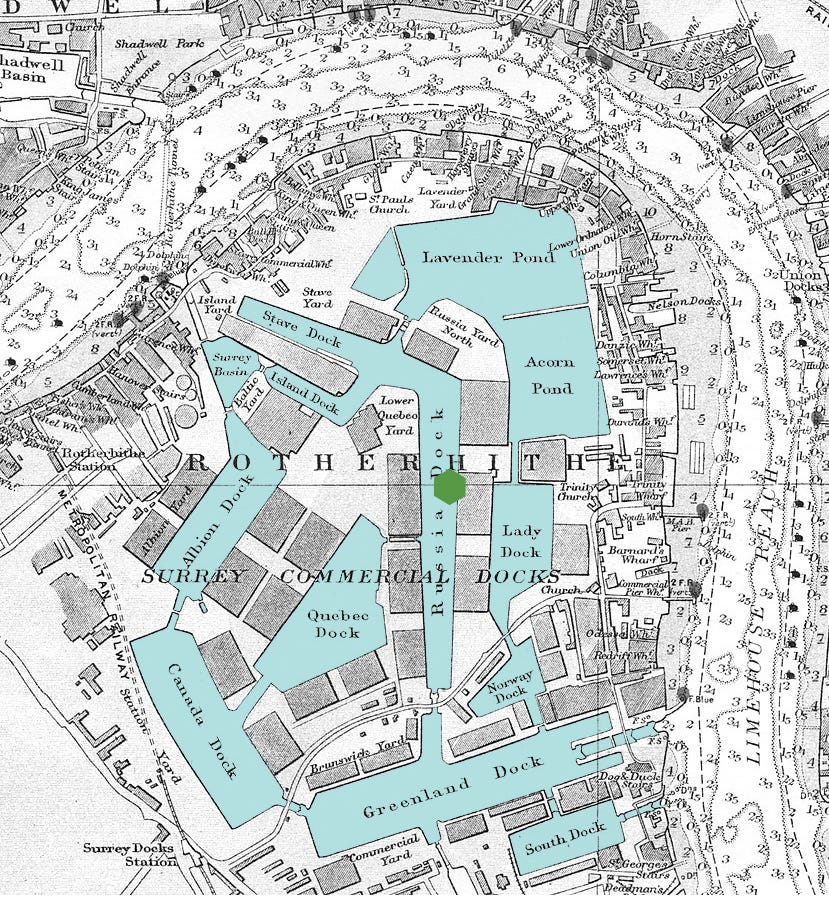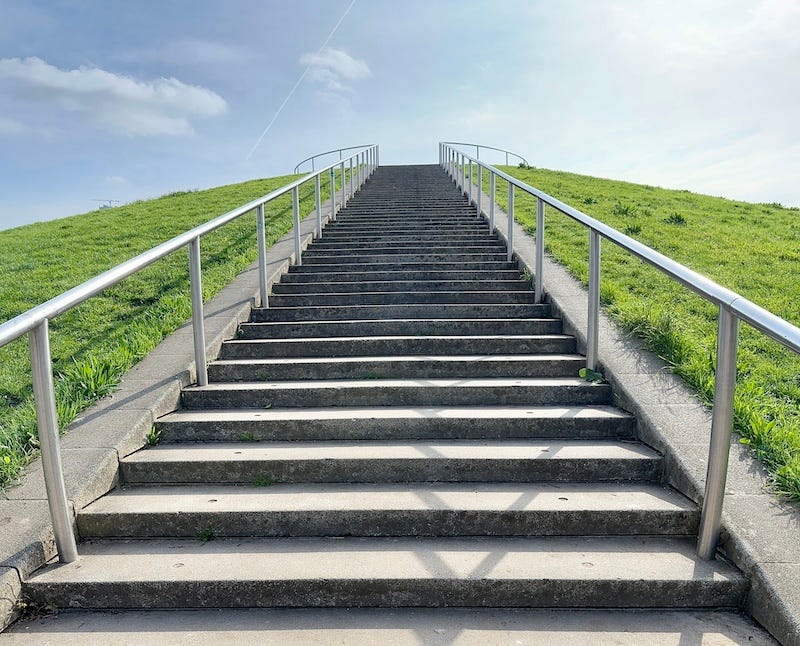Welcome to your Friday newsletter. Today, I’m following on from Wednesday’s lofty heights with a visit to a very different vantage point in Rotherhithe — which I’m provocatively dubbing London’s least historic hill. First, though, the History Radar of upcoming events with a London twist.
History Radar
🏗🌇 CONCRETE AND CLAY: It’s your last chance to see a 1:22 scale model of the Barbican Centre and Estate, on display in the centre’s foyer as part of the current Concrete and Clay: Archiving the Barbican exhibition. Architectural plans, drawings, photos, objects and leaflets from the design of the building are also available to view until 5 April.
🕵🏾♀️👀 MI9: How much do you know about second world war organisation MI9? It was established in London to help Allied forces to escape from behind enemy lines, and historian Helen Fry offers further insight in an online talk hosted by the National Archives on 3 April. Find out how MI9 saved thousands of live and contributed to wartime intelligence gathering.
✍️🧱 HISTORIC GRAFFITI: Anyone who read Wednesday’s Wren article will know that I’m fascinated by historic graffiti. Well, I now learn there’s a whole book about it. Historian Madeleine Pelling’s Writing on the Wall tells the story of the 18th century through the marks its citizens -- from all parts of society -- left behind, in the form of graffiti. She gives a talk at Southwark Cathedral on 4 April.
👸🏻🎨 JANE GREY: Also on 4 April, head to the Society of Antiquaries at Burlington House for a talk about Lady Jane Grey Dudley, the so-called Nine Days Queen. In what sounds like a fascinating talk, Dr J Stephan Edwards will discuss the search for a portrait of the fleeting monarch. No authentic likenesses are known today, but an official portrait was painted during her lifetime. Where did it go?
🎭🎶 BONUS TUDORS: If that whetted your appetite for the 16th century, get ye to Southwark Cathedral on Saturday 6 April for several talks on Tudor genius. Subjects include Shakespeare, Holbein, music of the period and changes to society.
🧵🪡 SEWING MACHINE MUSEUM: The monthly opening of London's Sewing Machine Museum -- located in Balham -- takes place on 6 April, offering you a chance to see inside one man's collection of the machines. Many of them are historic, including one which belonged to Queen Victoria's daughter -- here's some more background on the little-known museum.
Climbing London’s Least Historic Hill
The highest mound in Rotherhithe didn’t exist 40 years ago. Within many of our lifetimes, this was a deep, water-filled trench.
I’m stood before Stave Hill, crowning glory of a local nature reserve about a mile east of Tower Bridge. It thrusts up almost at the exact centre of the Rotherhithe Peninsula like a suburban Silbury.
I call it London’s least historic hill because, well, it has no history. It was built in 1984, the year of Ghostbusters, The Terminator and Police Academy. This modern mound was pulled into coherence from the detritus of old docklands; a raspberry rubble ice cream scoop plonked within a manufactured nature reserve.
The hill itself might lack history, but it certainly has an origin story. As late as the 1970s, Rotherhithe looked a bit like this:

Almost the entire peninsula was given over to basins and warehousing, an industrial landscape known as the Surrey Commercial Docks. Their main purpose was to handle timber imports. This is where the name Stave Hill comes from. Staves are rounded cuts of wood, commonly used in barrels. We can see a Stave Dock and Stave Yard in the map above. The future hill would perpetuate their name.







